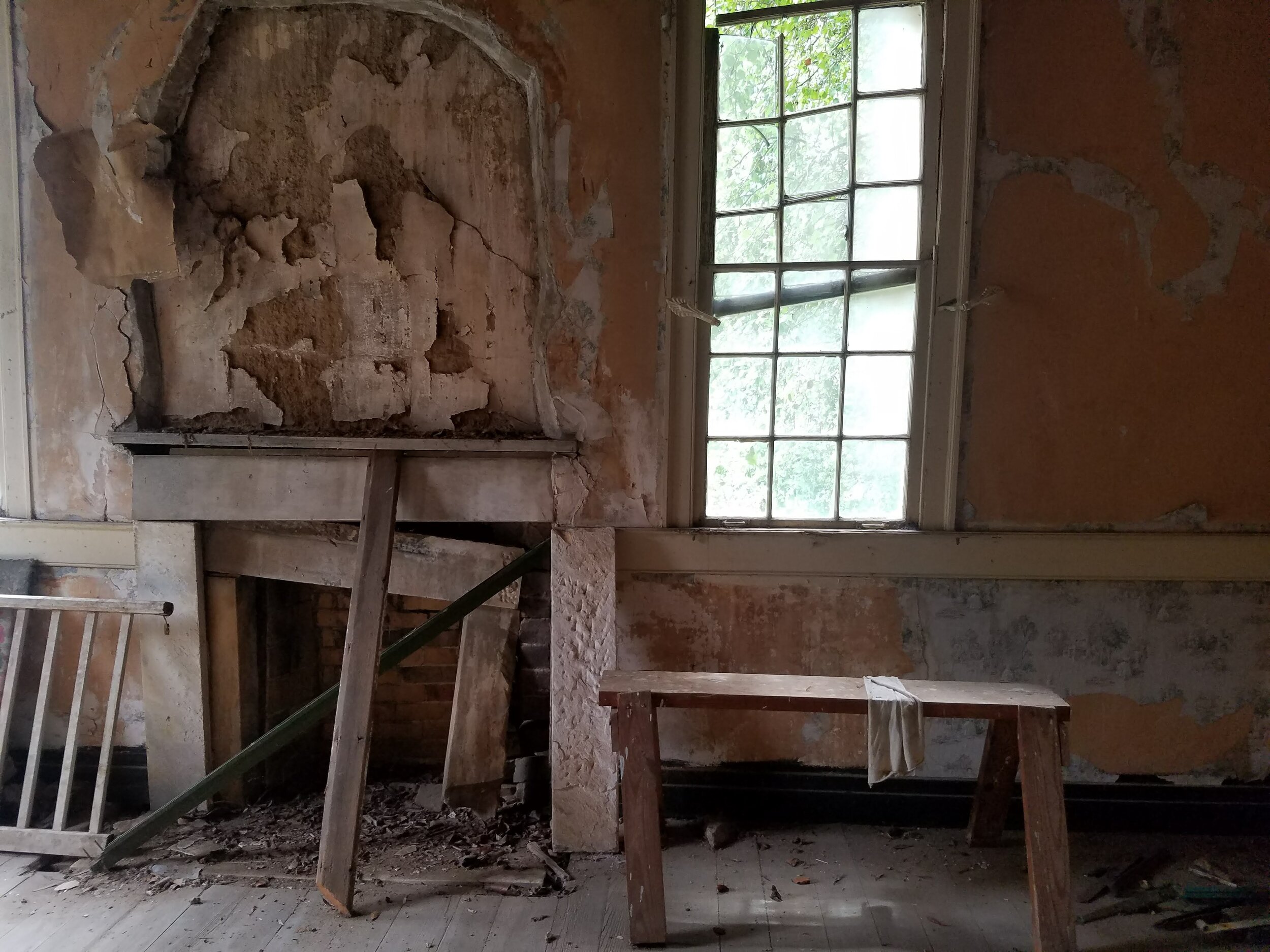Preservation with a Purpose
Preservation with a purpose
When Bob Gamble, a retired architectural historian and preservationist, said the phrase “preservation with a purpose,” I immediately resonated with it. When I inherited our family’s antebellum house in the Alabama countryside in 2018, I had inherited the mantle from my family of keeping the place standing. My immediate predecessors had done this for half a century… but the house had no life. It stood vacant for three generations of our family, though the far-flung descendants of this ancestry looked to it, in one way or another, as a symbol of their heritage. I, who had grown into adulthood distancing myself from this heritage, was perplexed. I felt a strong obligation to stabilize the house, to keep it from imploding, but why and for what?
And whose house was it really? Yes, my family of cotton planters had established the house in 1841. But who had physically built it and created the life of the plantation? It was the approximately 100 persons enslaved on the place by my six-person family. The heritage of this house belonged not just to the family I recognized as mine, but to the African American descendants of those enslaved there. Clearly our histories were different, but we were joined at the hip by this house, at this place, through the institution of slavery. My heritage of slavery had long weighed on my mind and now I was in a position to confront it head on.
In a short time, I learned that, in contrast to my family, many of those descendants lived in Harpersville and the surrounding communities. They were Wallaces, like my family, but they traced their ancestry through different bloodlines back to Klein, the place we all shared. Theoangelo Perkins, the first African American mayor of the town and a history buff, was the person who opened my eyes to this reality. I had known his great-great-uncle when I was a child. Their family had moved to the Wallace land after emancipation and had farmed the cotton until the remaining Wallace women living there died.
Theo Perkins raised the question of the Wallace family cemetery to me. My immediate Klein-owning predecessors had closed the black portion of the cemetery off except for two days of visitation per year. What would I do? The answer was clear. Theo and I decided to bring the black and white families together last October to open and rededicate the cemetery and to share a meal at Klein. We gathered in a circle at the cemetery. I apologized on behalf of my family for closing the cemetery, and for other injustices we had committed from slavery forward. We sang, we prayed, and we passed the cemetery gate key to a black Wallace descendant. This time at the cemetery felt sacred. Then we adjourned to the house for a facilitated discussion and barbeque lunch. There, we began to get to know each other and build some trust. We are having our second homecoming this October. We hope to continue where we left off with a similar program. This year, we will also have short informational presentations by the contractor and craftsman who have been stabilizing the house, by our Klein Arts & Culture Board on the organization’s mission and plans, and by the Wideman-Davis Dance Company giving a preview of their performance of Migratuse Artaxia, bringing the black presence into our empty antebellum space in January for the Alabama Dance Festival.
For the past year we have been performing the preservation role at Klein. The chimneys have been rebuilt, the attic righted, the porches replaced, and rot within the house addressed. While we were fixing the empty house, we have been working on how to bring life to it. What is the purpose of our preservation? At the end of 2018, we founded the non-profit organization Klein Arts & Culture with a board composed of descendants who are bound together by the house. Its mission, which brings the purpose to the preservation, is “to preserve the Klein-Wallace house as an arts, education, and cultural venue to educate the public through exhibitions, events, and tours that honor the black and white histories that share this time and place. The house offers space for conversations around race, rectification of past and present injustices, and social change.” In 2019, I deeded the house to Klein Arts & Culture. Our organization is breathing new life into Klein as a site for conscience; as a site for reconciliation; as a site all of us can now call home.
I invite you to look on our website (www.kleinartsandculture.org), attend our events, sign up for our newsletter, and if you are so moved support our work financially (https://kleinartsandculture.org/become-a-sponsor) . We are linking preservation with purpose and making a difference in our corner of Alabama.
—Nell Gottlieb
October 4, 2019


